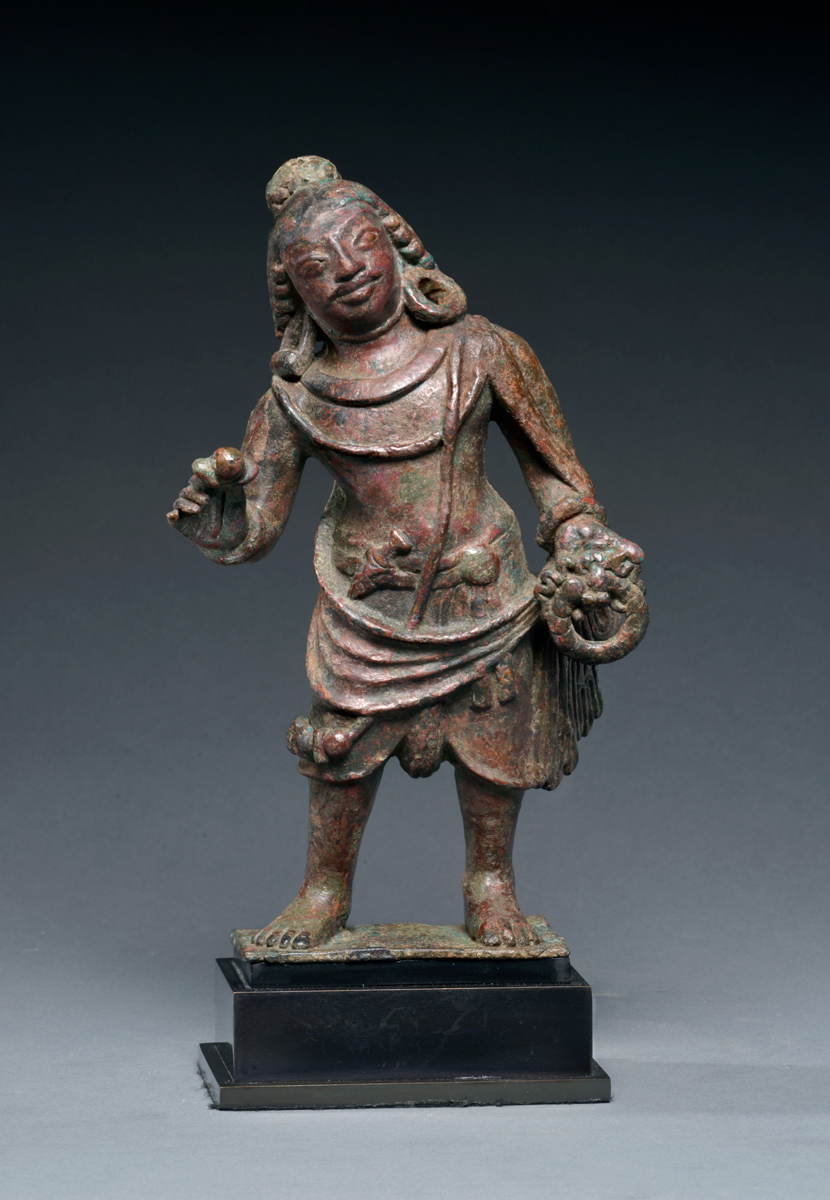
The Guptas are generally known as one of the richest and most successful dynasties in Indian history (320 – 470 CE). Its five kings, from Chandragupta to Skandagupta, were genuine supporters of peace and freedom of religion. They created the perfect conditions for the development of the arts. Many instruction books or shastras, were written on music, dance, sculpture, iconography, painting and literature. Kalidasa, the ‘Shakespeare of India’ and the world-famous sculptures and paintings in the cave-temples of Ajanta and Ellora, are two exponents of the ‘golden’ Gupta age.
Gupta aesthetics, especially in sculpture, became the Indian standard for many centuries to come, even far beyond Indian borders. Nevertheless, Kushan and Mathura characteristics from the olden days had a great influence on the development of Gupta art.
Gupta terra cottas and early bronzes give us valuable information regarding the inherent spirit that made Gupta art so lively, attractive and deeply human. The baked clay sculptures, mostly conceived as decorative panels in architectural structures, are exceptionally pleasant and charming: rounded shapes, oval faces, bulging eyes with deep irises, clearly marked lines defining the eyes, heavy eyelids, arched eyebrows, aquiline noses with wide nostrils, thick smiling lips with dimples at the outer corners, curly hair or corkscrew-shaped locks, large ears decorated with elaborate circular earrings in the lobes, etc.
The same characteristics appear in early Gupta bronzes, as is the case with this bronze. The figure stands firmly with his feet apart, bending to his proper right. He holds a lotus bud in his right hand, a rosary in the left. In his double belt sits a knife or a dagger. His shoulders are loosely covered with a textile, one end falling over his left shoulder, the other draped around the waist, ending in a sash. Underneath he wears a dhoti. He also has a Brahmanical cord over his left shoulder, which is tucked under his garment and reappears at his right knee, with some spherical amulets attached. His face is depicted with the typical bulging eyes, an aquiline broad nose and thick lips under his moustache. His hair is tied up in a chignon and curls down behind his ears. The pierced earlobes contain two large but differently shaped earrings.
He looks friendly, slightly wondering, seemingly ready for some action, expressing the typical liveliness of Gupta terra cotta scenes.
The exact identity of this figure is not directly clear. In his book ‘Kushana Sculptures from Sanghol (1st -2nd Century A.D.) A Recent Discovery’ 1985, Vol 1 p.119, S.P. Gupta describes a standing male figure on a small pillar (Acc.No. 105) with a comparable general expression. He calls it a ‘Royal Devotee … in the pose of a Kshatriya ruler’. Our devotee’s attire, depicted with a Brahmanical cord, a knife, earrings and a bending posture, could be based on such early examples. The Brahmanical cord, the lotus bud and the rosary, can hint to a larger religious composition. In that repect he is an attendant, or ayudhapurusha, to a much larger effigy of a god on his right side, for which the bending posture could be an indication. In that context the names ‘Pingala’ or ‘Danda’, accompanists of the sun god Surya, have been suggested.
Provenance:
Private collection, Hong Kong, before 1998.
Collection Mr. M. Hassan, Thailand, 1998–2019.
Reports:
Analysis and Materials Science for the Preservation of Cultural Property. Scientific Examination of Gupta Bronze Sculpture of Pingala by J. Twilley, London, January 2nd, 2019.
Literature:
J.G. Williams, The Art of The Gupta India Empire and Province, Princeton, 1982, p.52, fig.49.
S.P. Gupta, Kushana Sculptures from Sanghol (1st-2nd century A.D.) A Recent Discovery, vol 1, New Delhi, 1985, p.119, fig.9.
Price On Request
|

